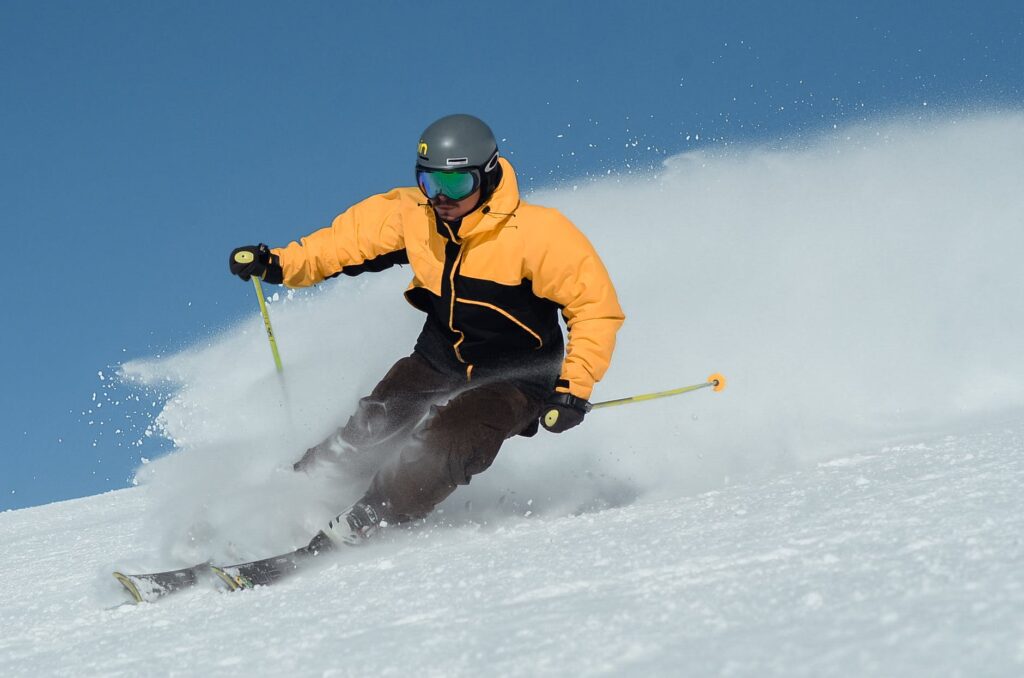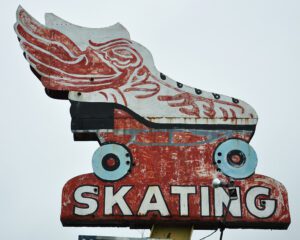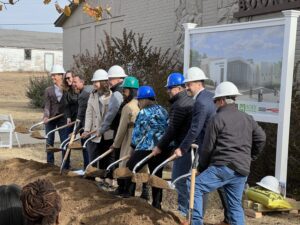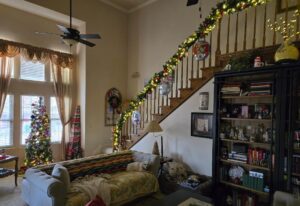Believe it or not, Kellyville, Oklahoma once had a ski slope. In mid-1971, after reportedly traveling 3,000 miles in Oklahoma in one week, “looking for a good hill,” Willis Barrows selected Kellyville as the site of “Oklahoma’s first ski area.” He told the press that he stopped in the small community and “There I was, looking at this fine ridge.”
Barrows, a Vermont native who moved to California to become a ski instructor and who later managed a ski resort in Big Bear Lake, California, leased seven acres of what was described as three good slopes from J.D. Goodman. The land is between Highway 66 and Heyburn Road.
He convinced local “investors” that once temperatures fell below freezing, he could cover five acres with 5 inches of snow in approximately eight hours. He told them he could run the slope for 30 days with just 10 freezing nights.
He promised that Snow Valley would have ski tows, instruction, exhibitions, ski rentals, a toboggan slide, and a “huddle house,” complete with a fireplace.
Apparently low on capital, Barrows cajoled and coaxed locals into supporting his ambitious enterprise through the extensive use of bartering in exchange for free passes, and most likely promised a share of the profits to obtain the necessary equipment and supplies. To promote his venture he primarily used posters and passes.
There was excitement in the air as Kellyville residents eagerly awaited the opening, confident that a ski slope would put their little town “on the map.” The grandiose plans looked better on paper than in real life. The “huddle hut” was an 8×12 shed that served as a rental booth, storage for equipment, and a place for Barrows to sleep at night. There was a small concession stand, and finally, a single portable toilet.
On opening day, according to a local news story, one patron borrowed a line from the TV show “Gomer Pyle” and uttered, “Surprise, surprise, surprise.”
Unfortunately, the vagaries of Oklahoma weather stalled the projected opening date of December 1, 1971. A year later, a story in the Sapulpa Daily Herald said that the story of this ski slope “could well be titled, The Endless Summer.” Warm weather ensued through December. As a matter of fact, Kellyville citizens celebrated Christmas 1971 under sunny skies and a balmy 72-degrees. Finally, a few days later an Arctic front moved in bringing sub-freezing temperatures and blustering winds.
Sapulpa Times interviewed Dwight Davidson, former superintendent of Kellyville Schools, who was on Christmas break from Oklahoma State in Stillwater and was hired by Barrows to do whatever needed to be done. He was paid $1.75 per hour and amassed the princely sum of $80 for his hard work.
He recalls the futile first attempt to lay down snow during that cold snap. The strong winds from the cold front blew the manufactured snow into the adjacent property, thus making it impossible to open for business. Davidson said that the wind finally subsided, and that weekend they were able to lay down snow to permit patrons to ski down the slope.
The first day of operation was hectic. Barrows had handed out far too many free passes and there was not enough room on the slope and equipment for everybody. People were shoulder-to-shoulder waiting in line, and there were accidents because of the crowded conditions and the fact that many people on the slope had never skied before. Onlookers were a major problem, causing a traffic jam that extended out to Highway 66.
Davidson said that skiers frequently ran into the portable toilet, knocking it over. The shed and concession stand were also the victims of out-of-control skiers. The snow went right up to the fence and inexperienced skiers simply could not stop in time and collided with it.
He said that he spent a good deal of time helping people extricate themselves from the 5-wire barbed wire fence that surrounded the property. Davidson said he did not want to damage the fence because he felt that Mr. Goodman would be there long after the snow maker was gone. This often meant ruining an expensive ski jacket to keep from cutting the fence.
Another problem was that after a few hours of sunlight, the snow would turn to slush, and in some places would melt completely, leaving bare spots of dirt. A skier or toboggan racing down the hill would then come to an abrupt halt with unpleasant consequences.
The next bout of winter weather occurred on January 4th, 1972. However, although Mother Nature complied, catastrophic equipment failure doomed the endeavor.
A two-inch water valve burst, shutting off the water supply to the five “snow guns,” thus covering the area in a sheet of ice. After making repairs, Barrows discovered that the rented compressor was consuming four quarts of oil an hour; he soon ran out of oil. After obtaining more oil, he started making snow again, but 35 mile-per-hour winds scattered the newly made snow.
Barrows hoped that the freezing weather would remain until the next day and he would be able to open for business. His hope soon faded when he was served with a court order to cease operation from 8 p.m to 8 a.m. Micheal Stout, who lived 150 feet away from the snow-making machine, was granted a temporary injunction, because he said that the noise kept him and his family awake.
Barrows told the judge, “You can’t make snow in the sunlight because it melts too quickly.”
Barrows and the plaintiff reached an agreement. Barrows put a muffler on the compressor and placed it in an enclosed structure. The matter was settled, but the weather had other plans. On January 15, 1972, Barrows was able to lay down an inch of snow. Unfortunately, two days later it was 71 degrees. Barrows left a month later to manage a ski resort in New England, vowing to come back, but he never did.
Some might say he was a scam artist, a hustler, a grifter, while others may say he was a visionary who encountered a series of unfortunate events. Looking back, Davidson mused that he was likely the only one who received monetary remuneration and felt lucky to be paid.











